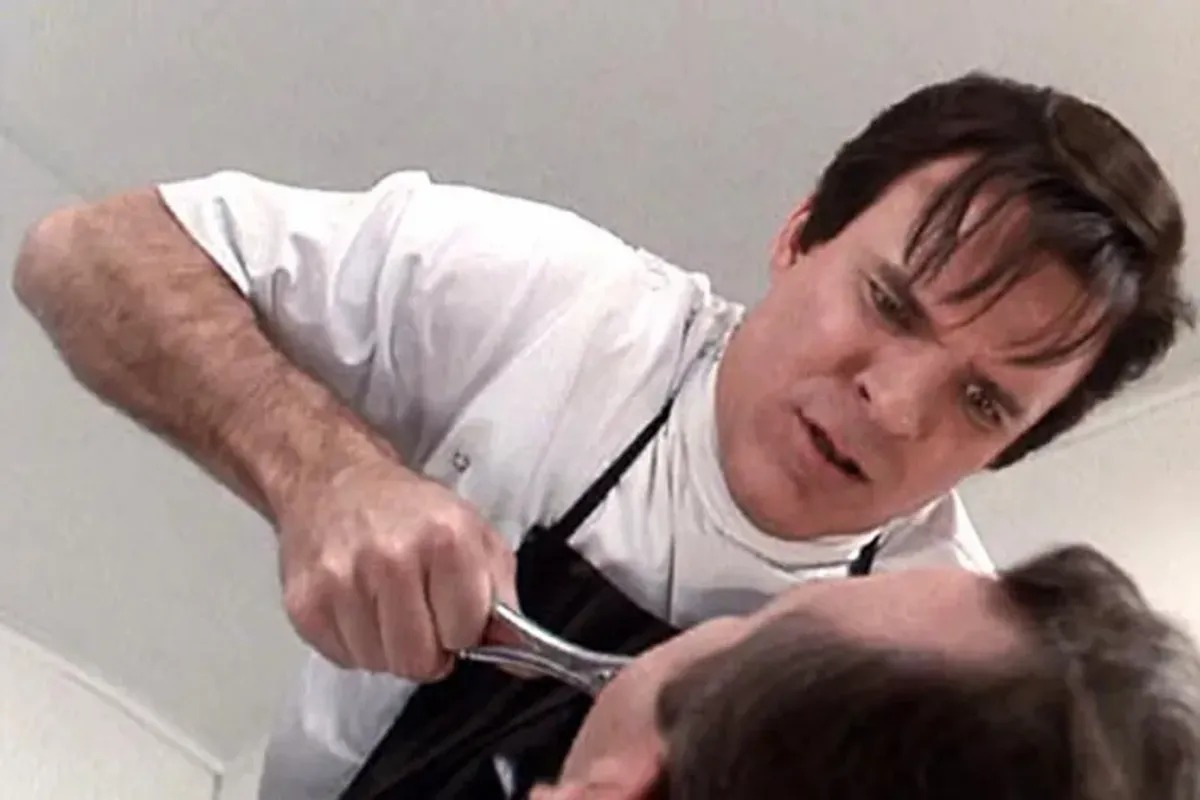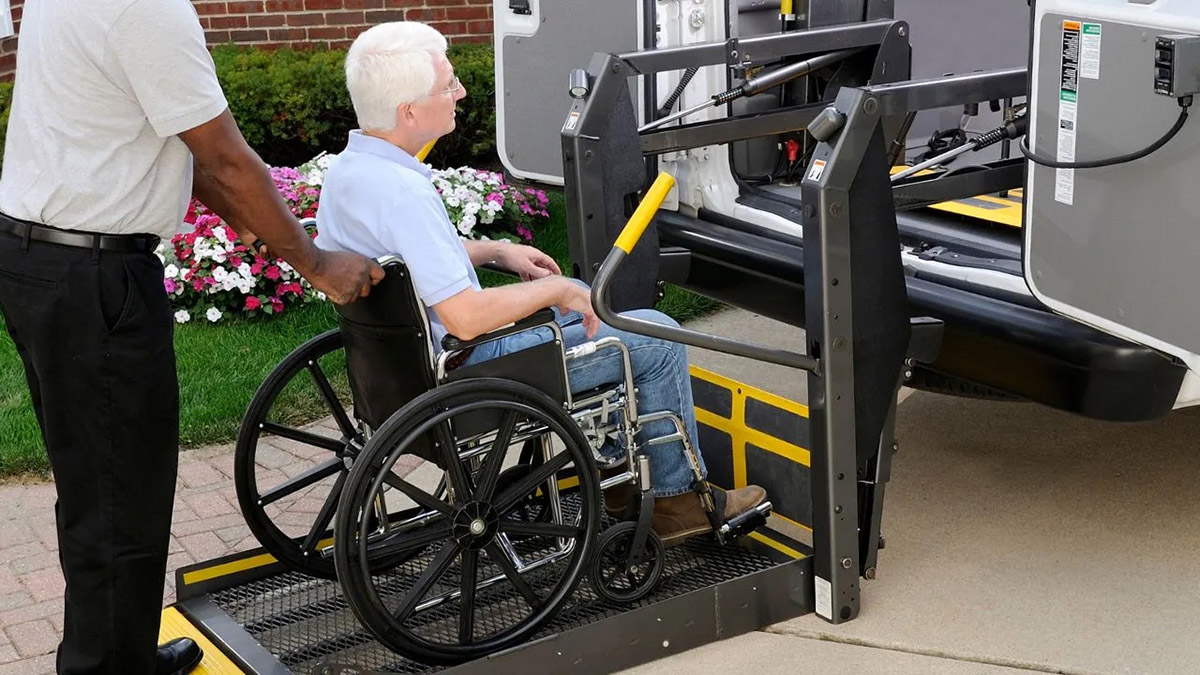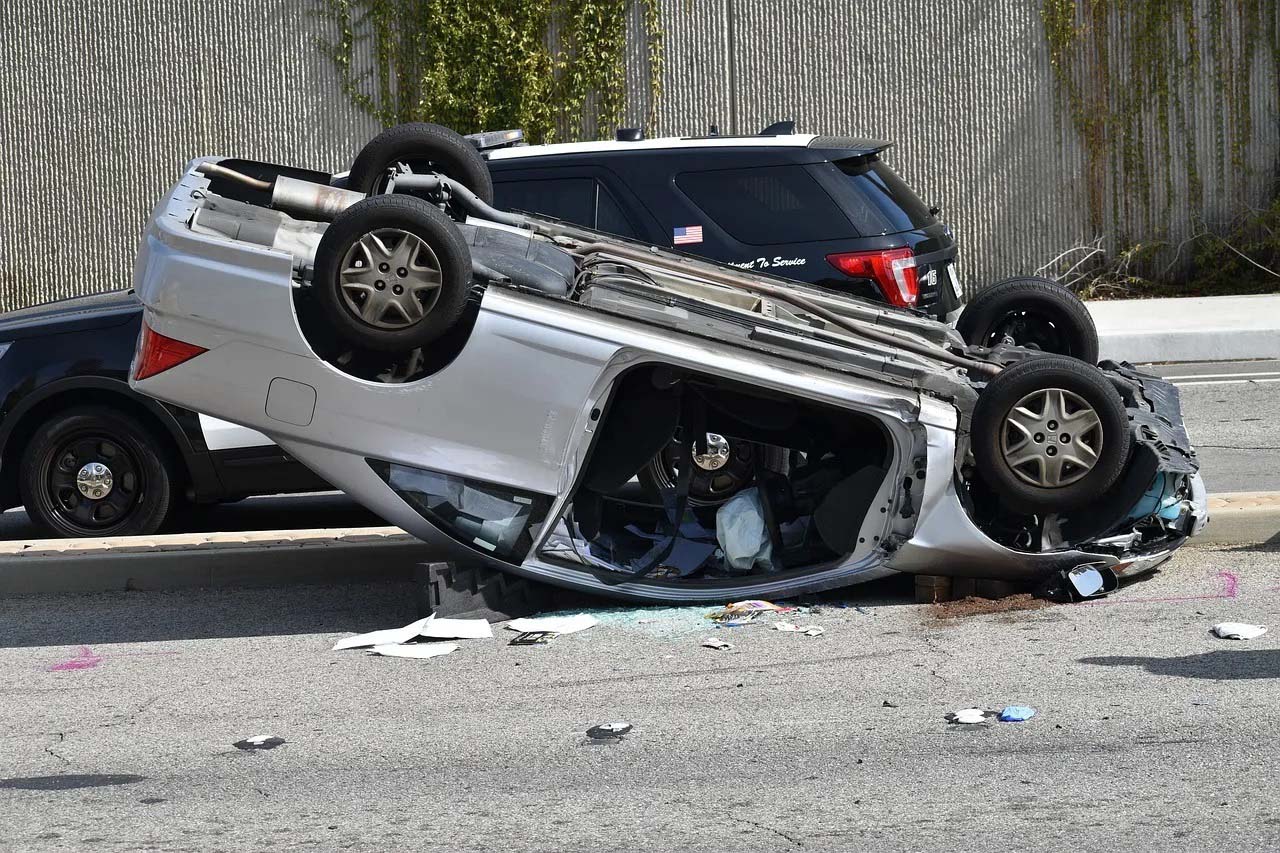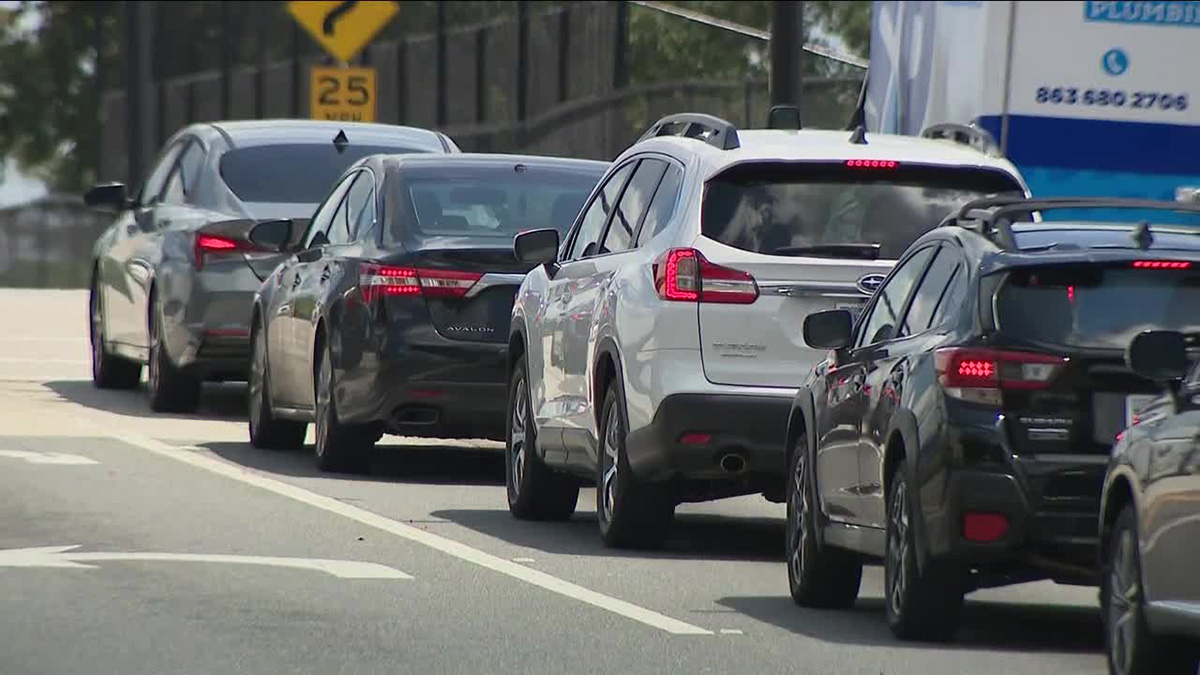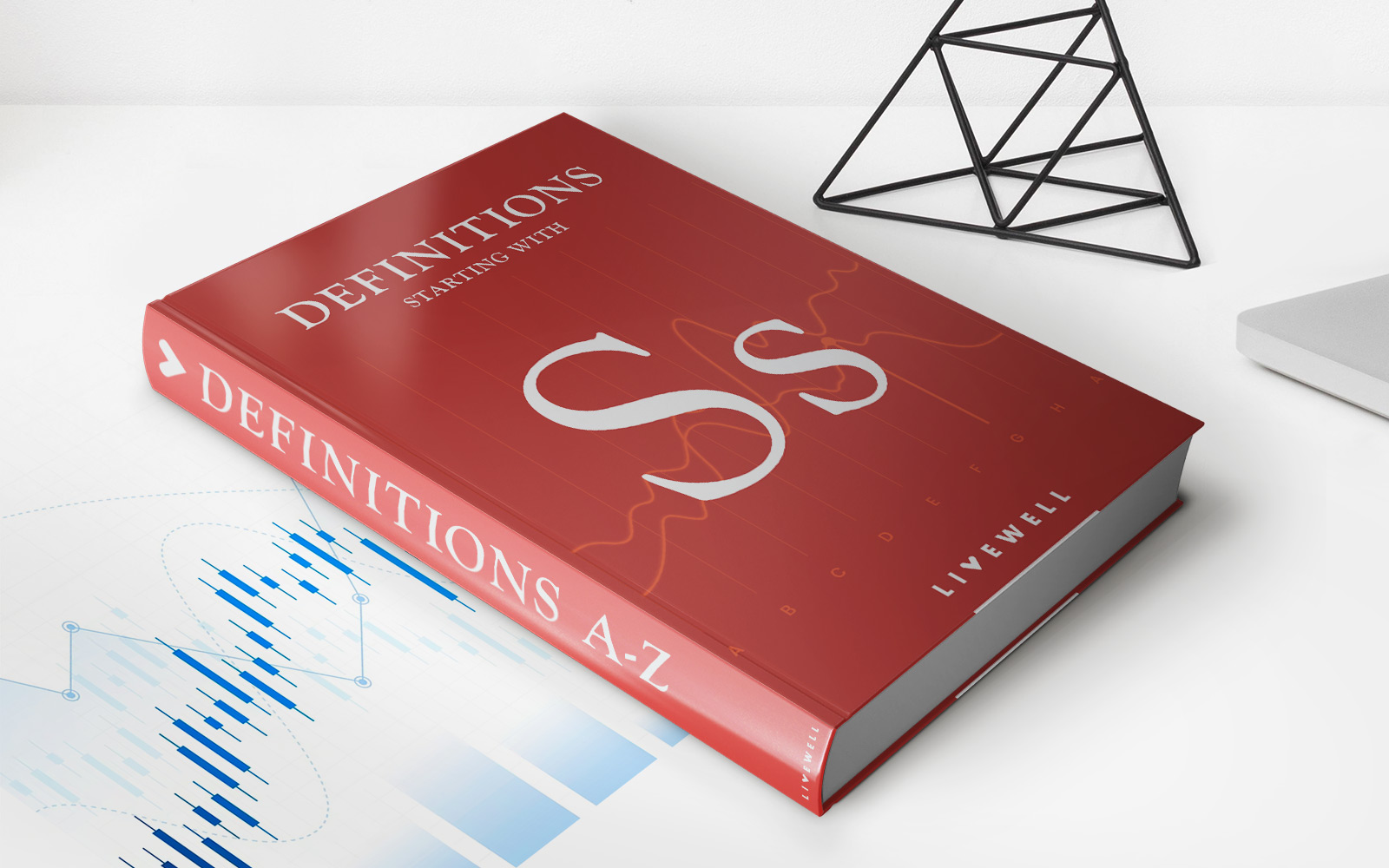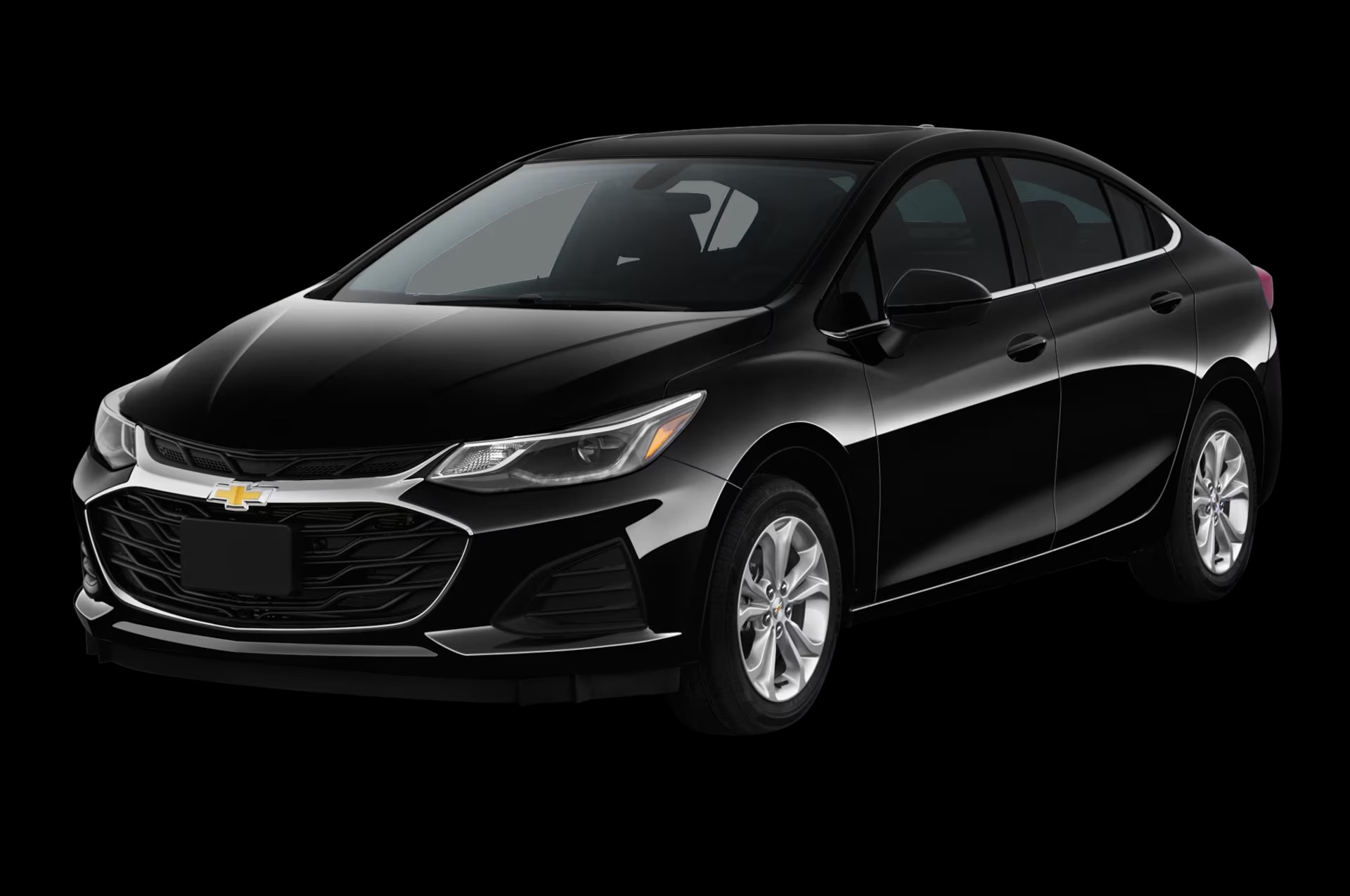

Finance
Why Is Chevy Cruze Insurance So Expensive?
Published: November 21, 2023
Discover the reasons behind the high cost of Chevy Cruze insurance in this comprehensive guide. Learn how to navigate the financial implications and find affordable coverage.
(Many of the links in this article redirect to a specific reviewed product. Your purchase of these products through affiliate links helps to generate commission for LiveWell, at no extra cost. Learn more)
Table of Contents
- Introduction
- High Theft Rates
- Costly Repairs
- Expensive Replacement Parts
- Safety Concerns
- Higher Accident Rates
- Location-Based Factors
- Lack of Driving Experience
- Age of the Vehicle
- Personal Driving History
- Credit Score Impact
- Choice of Coverage Options
- Insurance Company Factors
- Ways to Save on Chevy Cruze Insurance
- Conclusion
Introduction
When it comes to insuring a Chevy Cruze, many car owners are often surprised by the high cost of insurance premiums. The Chevy Cruze, a popular compact car, offers a winning combination of style, efficiency, and affordability. So why is Chevy Cruze insurance so expensive?
Several factors contribute to the higher insurance rates for the Chevy Cruze. Understanding these factors can help car owners make informed decisions when it comes to purchasing insurance coverage for their vehicle. In this article, we’ll explore the reasons behind the pricey insurance premiums for the Chevy Cruze and provide some tips on how to save on insurance costs.
It’s important to note that insurance premiums can vary based on personal factors such as driving history, location, and coverage options. While the information provided here offers general insights, it may not apply to every individual’s situation.
So, let’s dive into the reasons why Chevy Cruze insurance can be more expensive than anticipated.
High Theft Rates
One of the main reasons why Chevy Cruze insurance rates can be higher is due to its popularity among car thieves. The Chevy Cruze has consistently ranked among the most stolen vehicles in recent years. This increased risk of theft translates to higher insurance premiums.
Thieves target the Chevy Cruze because of its sleek design, good resale value, and availability of certain components that can be easily sold in the black market. Additionally, its compact size makes it easier to maneuver and conceal, making it an attractive target for criminals.
To mitigate this risk, insurance companies have to increase the premiums to cover potential losses from theft. They take into account the make and model of the car, as well as the theft rates in the specific area where the car is primarily driven and parked.
To combat the high theft rates, car owners can take proactive measures to improve the security of their Chevy Cruze. Installing anti-theft devices such as steering wheel locks, GPS tracking systems, immobilizers, and alarm systems can deter thieves and reduce insurance premiums. Parking in well-lit areas or secure garages can also decrease the risk of theft.
It’s important to note that even with these security measures, insurance companies may still consider the theft rates when determining premiums.
In summary, the high theft rates associated with the Chevy Cruze contribute to the higher insurance premiums. Car owners can lower their insurance costs by investing in anti-theft devices and taking precautions to secure their vehicle.
Costly Repairs
Another factor that contributes to the higher insurance rates for the Chevy Cruze is the potential for costly repairs. While the Chevy Cruze is known for its reliability, like any vehicle, it can still experience mechanical issues and accidents that require repair.
The cost of repairs for the Chevy Cruze can be higher compared to other vehicles in its class. This is due to several reasons, including the complexity of the car’s technology, the availability and cost of replacement parts, and the labor involved in repairing specific components.
Insurance companies take into consideration the repair costs when determining premiums. The more expensive it is to repair a vehicle, the higher the insurance premium is likely to be. If the Chevy Cruze requires specialized equipment or parts that are difficult to source, the repair costs can be significantly higher.
In addition, the Chevy Cruze’s advanced safety features such as collision avoidance systems, lane departure warning systems, and advanced airbag systems contribute to the higher repair costs. While these safety features provide valuable protection for the occupants, they can be costly to repair or replace if damaged in an accident.
To mitigate the impact of costly repairs on insurance premiums, car owners can consider purchasing comprehensive and collision coverage. These coverage options can help cover the expenses of repairs in the event of an accident or damage from other non-collision incidents such as theft, vandalism, or severe weather events.
Furthermore, maintaining a good driving record and avoiding accidents can help in reducing insurance premiums. The fewer claims made for repairs, the lower the overall cost of insurance.
In summary, the potential for costly repairs, including specialized components and advanced safety features, contributes to the higher insurance rates for the Chevy Cruze. Car owners can consider comprehensive and collision coverage options and maintain a good driving record to help mitigate these costs.
Expensive Replacement Parts
When it comes to repairing a Chevy Cruze, another factor that drives up insurance costs is the price of replacement parts. The Chevy Cruze is known for its quality build and advanced features, which often come with a higher price tag for replacement parts.
Insurance companies consider the cost of replacement parts when determining premiums. If the replacement parts for a specific vehicle are expensive, it increases the overall cost of repairs, which in turn leads to higher insurance rates.
The Chevy Cruze, with its cutting-edge technology and advanced safety features, often requires specialized parts that are not as readily available as those for more common vehicles. This scarcity and the cost of manufacturing these specialized parts contribute to their higher prices.
Moreover, the demand for replacement parts for the Chevy Cruze can also impact their cost. As a popular vehicle, there is a higher demand for these parts, leading to increased prices.
To mitigate the impact of expensive replacement parts on insurance premiums, car owners can explore different options. One option is to purchase alternative parts, such as aftermarket parts or used parts, which can often be more affordable. However, it’s important to ensure that these parts meet safety and quality standards.
Additionally, car owners can consider comprehensive coverage, which may cover the cost of replacement parts in the event of an accident or damage. This coverage can help reduce the out-of-pocket expenses associated with repairing a Chevy Cruze.
In summary, the high cost of replacement parts for the Chevy Cruze contributes to the higher insurance rates. Car owners can explore alternative parts options and consider comprehensive coverage to help mitigate these costs.
Safety Concerns
When it comes to insurance rates, safety plays a significant role. The safety of a vehicle affects the likelihood and severity of accidents, which directly impacts insurance premiums. While the Chevy Cruze has many safety features, there are some safety concerns that contribute to its higher insurance rates.
One factor is the size and weight of the Chevy Cruze. As a compact car, it may not offer the same level of protection as larger vehicles in the event of a collision. Insurance companies take into account the potential for more severe injuries or damage in smaller vehicles, which can result in higher insurance premiums for the Chevy Cruze.
In addition, the Chevy Cruze has had some recalls and safety-related issues in the past, which can also affect insurance rates. Insurance companies consider the vehicle’s safety record and the potential for future safety concerns when determining premiums.
Furthermore, the safety ratings and crash test results of the Chevy Cruze can impact insurance costs. If a vehicle has lower safety ratings or higher chances of sustaining significant damage in accidents, insurance companies may increase the premiums to account for the increased risk.
To mitigate safety concerns and potentially lower insurance rates, car owners can consider investing in additional safety features and technologies. This may include upgrading to a higher trim level with advanced safety systems such as forward collision warning, lane departure warning, and blind-spot monitoring. These features can not only improve safety but also demonstrate to insurance companies that the vehicle is less likely to be involved in accidents.
It’s also crucial for Chevy Cruze owners to prioritize safe driving habits and obey traffic laws. Maintaining a good driving record with no at-fault accidents or traffic violations can help reduce insurance premiums over time.
In summary, safety concerns related to the size, weight, and historical safety record of the Chevy Cruze contribute to its higher insurance rates. Car owners can consider investing in additional safety features and maintaining a clean driving record to potentially lower insurance costs.
Higher Accident Rates
Another factor that can contribute to the higher insurance rates for the Chevy Cruze is its higher accident rates compared to other vehicles. While the Chevy Cruze is generally considered a safe and reliable car, there are certain factors that can increase the likelihood of accidents involving this vehicle.
One contributing factor to the higher accident rates is the driving behavior of Chevy Cruze owners. Some drivers may have a tendency to engage in riskier driving habits, such as speeding or aggressive driving, which can increase the chances of accidents. Insurance companies take into account historical accident data and statistical analysis to determine premiums, and if the Chevy Cruze has an above-average accident rate, it can result in higher insurance rates.
In addition, the Chevy Cruze’s design and performance characteristics may play a role in its accident rates. Its compact size and nimble handling can make it more susceptible to accidents, especially in situations where visibility may be limited or maneuverability is challenged. Furthermore, the high-tech features and distractions in the cabin, such as infotainment systems and connectivity options, can also contribute to driver inattention and accidents.
Car owners can help reduce their insurance rates by practicing safe driving habits, such as obeying traffic laws, avoiding distractions while driving, and maintaining a safe following distance. Taking defensive driving courses and installing telematics devices that track driving behavior can also demonstrate responsible driving and potentially result in lower insurance premiums.
It’s also important to note that accident rates can vary depending on geographical factors such as traffic congestion, weather conditions, and road infrastructure. Insurance premiums can be influenced by these location-based factors, so it’s worth considering when determining insurance rates for a Chevy Cruze.
In summary, higher accident rates associated with the Chevy Cruze can contribute to its higher insurance rates. Car owners can reduce insurance costs by practicing safe driving habits, considering location-based factors, and potentially installing telematics devices to demonstrate responsible driving.
Location-Based Factors
When it comes to insurance rates for the Chevy Cruze, location plays a crucial role. Insurance companies take into account the location where the car is primarily driven and parked when determining premiums. Certain geographical factors can increase the risk of accidents or vehicle theft, resulting in higher insurance rates.
Urban areas, where traffic congestion is common, tend to have higher insurance rates compared to rural areas. The increased number of vehicles on the road and the higher chances of accidents contribute to this disparity. Additionally, densely populated areas often have higher theft rates, which can also impact insurance premiums for the Chevy Cruze.
Climate also plays a role in determining insurance rates. Regions prone to severe weather events, such as hurricanes, tornadoes, or hailstorms, may have higher premiums due to the increased likelihood of vehicle damage. The potential for costly repairs or total loss of the vehicle from these weather-related incidents leads to higher insurance rates.
Moreover, the specific location within a city or region can impact insurance costs. Areas with higher crime rates or higher accident rates may result in increased premiums. Insurance companies utilize actuarial data and historical records to assess the risks associated with specific areas and adjust the premiums accordingly.
To mitigate the impact of location-based factors on insurance rates, car owners can consider implementing certain measures. Installing security systems, parking the Chevy Cruze in secure garages, or choosing residential areas with lower crime rates may help lower insurance premiums. Additionally, defensive driving techniques tailored to the specific challenges of the local area can reduce the risk of accidents.
When moving to a new location, it’s important to notify your insurance company. Insurance rates can vary significantly between different regions, and failing to update your policy with the new address can lead to issues with coverage or potential claims.
In summary, location-based factors including traffic congestion, crime rates, weather events, and accident rates can impact insurance premiums for the Chevy Cruze. Car owners can take precautions by implementing security measures and defensive driving techniques to potentially lower insurance costs.
Lack of Driving Experience
For younger drivers or those who have recently obtained their driver’s license, insurance rates for the Chevy Cruze can be higher due to a lack of driving experience. Insurance companies consider a driver’s age and years of driving experience when determining premiums, as less experienced drivers are generally considered a higher risk.
New drivers, especially teenagers, often lack the necessary experience to handle various driving situations and may be more prone to accidents. This increased risk is reflected in higher insurance premiums for Chevy Cruze owners in this age group.
Younger drivers are also more likely to engage in risky or aggressive driving behaviors. Factors such as speeding, distracted driving, and impaired driving contribute to a greater likelihood of accidents and insurance claims. Therefore, insurance companies adjust their rates to account for these increased risks.
As drivers gain more experience on the road and demonstrate responsible driving behavior, insurance rates tend to decrease. Insurance companies typically offer lower rates to drivers who have maintained a clean driving record and have accumulated years of driving experience without any accidents or traffic violations.
To help mitigate the impact of a lack of driving experience on insurance rates, young drivers can enroll in driver’s education programs and defensive driving courses. These programs provide valuable knowledge and skills to help them become safer and more responsible drivers. Some insurance companies might even offer discounts for completing such courses.
Additionally, young drivers can consider being added to a parent’s or guardian’s existing insurance policy. This can often result in lower rates compared to purchasing a separate policy. It’s important to notify the insurance company about all drivers in the household to ensure proper coverage.
Overall, lack of driving experience is a contributing factor to the higher insurance rates for the Chevy Cruze, particularly for younger drivers. Taking driver’s education courses and maintaining a clean driving record can help young drivers gradually reduce their insurance premiums over time.
Age of the Vehicle
The age of the vehicle, including the Chevy Cruze, can have an impact on insurance rates. Typically, newer vehicles tend to have higher insurance premiums compared to older ones. There are several reasons why the age of the vehicle affects insurance rates for the Chevy Cruze.
One reason is the cost of repairs and replacement parts. Newer vehicles often require specialized parts that can be more expensive compared to older models. In the case of the Chevy Cruze, if specific components need to be replaced, the higher cost of these parts can drive up insurance premiums.
Additionally, newer vehicles may have advanced safety features and technology, which can also contribute to higher insurance rates. While these features can provide increased protection for occupants, they can also be costly to repair or replace if damaged in an accident. Insurance companies take into account the potential repair costs associated with these advanced features when determining premiums.
However, as a vehicle ages, the value of the Chevy Cruze depreciates. This depreciation can result in lower insurance rates as the overall value of the vehicle decreases. Older vehicles typically have lower market values, which means insurance companies would pay less in the event of a total loss or significant damage.
Insurance companies also consider the safety ratings of vehicles, and older models may have lower safety ratings compared to newer ones. This can contribute to higher insurance premiums for older vehicles like the Chevy Cruze.
To mitigate the impact of the age of the vehicle on insurance rates, car owners can consider adjusting their coverage options. For older vehicles with lower market values, owners may choose to drop comprehensive and collision coverage, as the cost of repairs may exceed the actual value of the vehicle. However, it’s important to carefully assess the risk and potential financial implications before making this decision.
Furthermore, maintaining the Chevy Cruze in good condition with regular maintenance and addressing any mechanical issues promptly can help demonstrate responsibility as a car owner and potentially lead to lower insurance rates.
In summary, the age of the vehicle, including the Chevy Cruze, can impact insurance rates. Newer vehicles generally have higher insurance premiums due to higher repair costs and advanced safety features. As a vehicle ages, the depreciation and potentially lower safety ratings can lead to lower insurance rates.
Personal Driving History
One of the key factors that insurance companies consider when determining premiums for the Chevy Cruze is the driver’s personal driving history. A driver’s past record of accidents, traffic violations, and insurance claims can significantly impact insurance rates.
If you have a clean driving record with no accidents or traffic violations, you are likely to benefit from lower insurance rates. Insurance companies view drivers with a history of responsible driving as lower risk, as they are less likely to be involved in accidents or make claims.
However, if you have a history of at-fault accidents, reckless driving, or multiple speeding tickets, insurance companies may classify you as a higher-risk driver. This classification can lead to higher insurance premiums for the Chevy Cruze.
Insurance companies typically review your driving history for the past three to five years. Therefore, practicing safe driving habits and maintaining a clean driving record over time can help reduce your insurance rates as you build a positive driving history.
It’s essential to be aware that insurance companies can also consider non-driving-related factors in assessing risk. These factors may include your credit history, occupation, and even your zip code. However, the weight of these factors can vary depending on the insurance company and the laws of your specific location.
If you have a less-than-ideal driving history, there are still ways to potentially mitigate the impact on insurance rates. Some insurance companies offer accident forgiveness programs, which allow policyholders to maintain their good driving discount even after having an accident. Additionally, defensive driving courses or driver improvement programs may help improve your driving skills and demonstrate to insurance companies your commitment to safer driving.
In summary, your personal driving history greatly influences the insurance rates for the Chevy Cruze. Maintaining a clean driving record and improving your driving skills can help lower your insurance premiums, while a history of accidents and traffic violations can lead to higher rates.
Credit Score Impact
One factor that may impact insurance rates for the Chevy Cruze, and other vehicles, is the driver’s credit score. In many states, insurance companies are allowed to consider an individual’s credit history when determining premiums.
Insurers believe that there is a correlation between a person’s creditworthiness and their likelihood of filing insurance claims. Studies have shown that individuals with lower credit scores are more likely to file claims, and those claims tend to be higher in cost.
While the use of credit scores in determining insurance rates can be controversial, it remains a common practice in the industry. Insurance companies argue that credit-based insurance scores provide valuable insights into the risk profile of an individual.
It’s important to note that not all states allow credit scores to be used as a factor in determining insurance rates, and where it is allowed, the impact on premiums can vary. Additionally, some insurance companies may place more emphasis on credit scores than others.
To mitigate the impact of your credit score on insurance rates, it’s essential to maintain a good credit history. This includes paying bills on time, keeping credit card balances low, and avoiding excessive new credit applications. Monitoring your credit report regularly for accuracy and addressing any errors or discrepancies can also help maintain a strong credit score.
If you believe that your credit score has been adversely impacted by extenuating circumstances, such as a job loss or medical expenses, you may consider reaching out to the insurance company to discuss your individual situation. They may be willing to take these factors into account or offer alternative options.
In summary, in some states, insurance rates for the Chevy Cruze can be influenced by the driver’s credit score. Maintaining a good credit history can help mitigate the impact on insurance premiums and potentially lead to lower rates.
Choice of Coverage Options
When it comes to insuring a Chevy Cruze, the choice of coverage options can have a significant impact on insurance rates. The coverage options you select for your policy determine the level of protection you have in various scenarios, and insurance companies adjust premiums accordingly.
There are several coverage options to consider when insuring your Chevy Cruze:
- Liability coverage: This coverage is usually required by law and helps cover costs if you are at fault in an accident that causes bodily injury or property damage to others.
- Collision coverage: This coverage helps pay for damages to your Chevy Cruze if you are involved in a collision with another vehicle or object.
- Comprehensive coverage: This coverage helps protect against non-collision incidents, such as theft, vandalism, or damage from severe weather.
- Uninsured/underinsured motorist coverage: This coverage helps protect you if you are involved in an accident with a driver who does not have insurance or has insufficient coverage to fully compensate for damages.
- Medical payments coverage: This coverage helps pay for medical expenses for you and your passengers in the event of an accident, regardless of who is at fault.
The level of coverage and the deductibles you choose for each of these options can impact your insurance rates. Generally, higher coverage limits and lower deductibles result in higher premiums, as the insurance company assumes a greater financial risk in the event of a claim.
It’s important to carefully evaluate your coverage needs and budget when choosing your policy. Consider factors such as the value of your Chevy Cruze, your financial situation, and your risk tolerance. Determining the appropriate level of coverage can help balance protection and affordability.
In addition to these coverage options, you may also have the choice to add additional endorsements or riders to your policy. These may include roadside assistance, rental car reimbursement, or gap coverage, which covers the difference between the vehicle’s actual value and the amount owed on an auto loan in the event of a total loss.
When selecting coverage options for your Chevy Cruze, it’s important to review and compare quotes from different insurance providers. Rates can vary significantly between companies, so it’s worth shopping around to find the best coverage at the most affordable price.
In summary, the choice of coverage options for your Chevy Cruze can have a direct impact on your insurance rates. Understanding your coverage needs and evaluating different options can help you find the right balance between protection and affordability.
Insurance Company Factors
When it comes to insurance rates for the Chevy Cruze, there are several factors related to the insurance company itself that can influence premiums. Different insurance companies have their own methodologies, algorithms, and underwriting guidelines that they use to determine the rates they offer to their policyholders.
One factor to consider is the overall risk appetite of the insurance company. Some insurers may be more conservative and cautious, resulting in higher premiums across the board. Others may have a more lenient approach, offering more competitive rates for the Chevy Cruze.
Insurance companies also consider their claims experience with the Chevy Cruze when determining premiums. If a particular insurer has had a higher frequency or severity of claims for this specific make and model, they may adjust their rates accordingly to mitigate their own exposure to risks.
Additionally, it’s worth noting that insurance companies may have different discounts and incentives available. These discounts can vary from one insurer to another and may include factors such as multi-policy discounts, safe driving rewards, low mileage discounts, or discounts for certain professional affiliations.
Customer service and reputation are also important considerations. A reputable insurance company with excellent customer service can provide added value and peace of mind. However, the cost of insurance coverage for the Chevy Cruze may be higher with a well-known, trusted provider compared to a lesser-known company.
It’s important to thoroughly research and compare quotes from different insurance companies to ensure you are getting the best coverage at the most competitive price for your Chevy Cruze. Consider factors such as the company’s financial stability, customer reviews, and their track record in handling claims.
In summary, insurance company factors such as risk appetite, claims experience, available discounts, customer service, and reputation can all influence insurance rates for the Chevy Cruze. Comparing quotes from multiple insurers and evaluating their overall offerings is essential to finding the right coverage at the most favorable rates.
Ways to Save on Chevy Cruze Insurance
While Chevy Cruze insurance rates can be expensive, there are several strategies you can employ to potentially save money on your premiums. Here are some ways to reduce the cost of insuring your Chevy Cruze:
- Compare quotes: Take the time to shop around and compare insurance quotes from multiple providers. Rates can vary significantly, so it’s important to get multiple quotes to find the best coverage at the most affordable price.
- Consider higher deductibles: Opting for a higher deductible can lower your premiums. However, keep in mind that you’ll be responsible for paying a greater portion of the cost in the event of a claim. Make sure you can comfortably afford the deductible amount.
- Bundle policies: If you have other insurance needs, such as homeowners or renters insurance, consider bundling your policies with one insurance company. Insurers often offer discounts for bundled coverage.
- Ask about discounts: Inquire about available discounts with your insurance provider. Common discounts may include safe driver discounts, good student discounts, or discounts for completing defensive driving courses. You may also be eligible for discounts based on your profession or affiliations.
- Install safety features: Adding safety features to your Chevy Cruze, such as anti-lock brakes, airbags, and anti-theft systems, can help lower insurance costs. These features reduce the risk of accidents and theft, which insurance companies recognize and reward with lower premiums.
- Drive responsibly: Practicing safe driving habits, such as obeying traffic laws, avoiding speeding, and avoiding accidents, can help maintain a clean driving record. A good driving record demonstrates responsibility and can lead to lower insurance rates.
- Consider usage-based insurance: Some insurance companies offer usage-based insurance programs where your premiums are based on your actual driving behavior. By installing a telematics device or using a mobile app, your insurer can track your mileage, speed, and other factors to potentially offer lower rates if you are a safe and responsible driver.
- Review coverage needs: Periodically review your insurance coverage needs. As your Chevy Cruze ages, you may want to reevaluate the need for comprehensive and collision coverage if the cost outweighs the value of your vehicle.
Remember, it’s essential to balance cost savings with adequate coverage for your specific needs. While reducing premiums is important, ensure that you have enough coverage to protect yourself and your vehicle in case of unforeseen circumstances or accidents.
In summary, by comparing quotes, considering higher deductibles, bundling policies, seeking discounts, installing safety features, driving responsibly, exploring usage-based insurance, and reviewing coverage needs, you can potentially save money on your Chevy Cruze insurance premiums.
Conclusion
Insuring a Chevy Cruze can come with higher than expected insurance premiums, but understanding the factors that contribute to these costs can help you navigate the insurance landscape more effectively. From high theft rates to the age of the vehicle, various elements impact insurance rates for the Chevy Cruze.
Factors such as the cost of repairs, availability of replacement parts, safety concerns, accident rates, location-based factors, driving experience, credit scores, coverage options, and the insurance company itself can all influence the cost of insuring your Chevy Cruze.
While there are aspects that are beyond your control, there are also steps you can take to potentially save money on insurance premiums, such as comparing quotes, opting for higher deductibles, bundling policies, asking for discounts, installing safety features, maintaining a clean driving record, considering usage-based insurance, and reviewing your coverage needs. These strategies can help offset some of the higher insurance costs associated with the Chevy Cruze.
Ultimately, finding the right insurance coverage for your Chevy Cruze requires balancing protection, affordability, and individual circumstances. It’s crucial to assess your own needs, research different insurance providers, and consider the factors specific to your situation to make informed decisions.
Remember, the information provided here serves as a general guide and may not apply to every individual’s situation. It’s always recommended to consult with insurance professionals or representatives to discuss your unique circumstances and obtain personalized advice.
By understanding the reasons behind the higher insurance rates for the Chevy Cruze and exploring ways to save, you can make informed decisions to protect your vehicle, yourself, and your finances while enjoying the benefits of this popular and reliable compact car.


